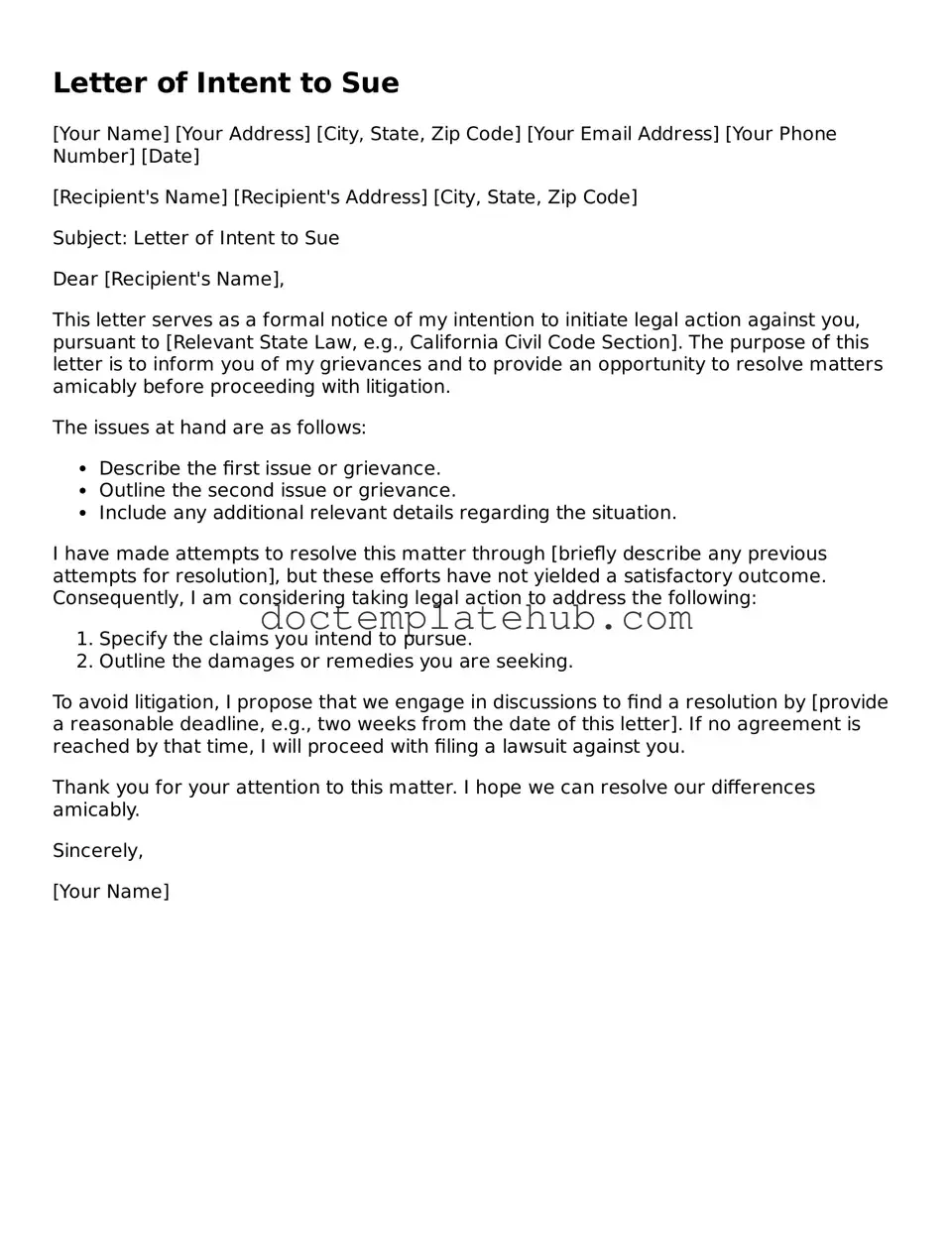What is a Letter of Intent to Sue?
A Letter of Intent to Sue is a formal document that notifies another party of your intention to file a lawsuit against them. This letter serves as a warning, giving the recipient a chance to address the issue before legal action is taken. It outlines the nature of the dispute, the basis for your claims, and the relief or resolution you seek. Sending this letter can sometimes encourage the other party to settle the matter amicably, potentially saving both sides the time and expense of a lawsuit.
When should I send a Letter of Intent to Sue?
You should consider sending a Letter of Intent to Sue when you have attempted to resolve a dispute but have not received a satisfactory response. This letter is particularly useful in situations involving contract disputes, personal injury claims, or any scenario where you believe your rights have been violated. Before taking this step, ensure that you have gathered all relevant facts and documentation to support your claims, as this will strengthen your position.
What should be included in the Letter of Intent to Sue?
Your Letter of Intent to Sue should include several key components. Start with your contact information and the recipient's details. Clearly state the purpose of the letter and provide a brief description of the issue at hand. Include specific facts that support your claim, such as dates, events, and any relevant agreements. Finally, specify the resolution you are seeking and set a reasonable deadline for the recipient to respond. This will create a clear framework for your expectations and next steps.
Is a Letter of Intent to Sue legally binding?
Generally, a Letter of Intent to Sue is not legally binding. It serves more as a notification and an opportunity for negotiation rather than a formal legal document. However, it is important to treat it seriously. The contents of the letter can be used as evidence in court if the dispute escalates to litigation. Therefore, it is advisable to approach the drafting of this letter with care and precision, ensuring that it accurately reflects your position and intentions.
What should I do if I receive a Letter of Intent to Sue?
If you receive a Letter of Intent to Sue, take it seriously. First, read the letter carefully to understand the claims being made against you. Consider seeking legal advice to assess your options and determine the best course of action. You may want to respond to the letter, addressing the claims and potentially proposing a resolution. Engaging in open communication can sometimes lead to a settlement, avoiding the need for a lawsuit altogether.
